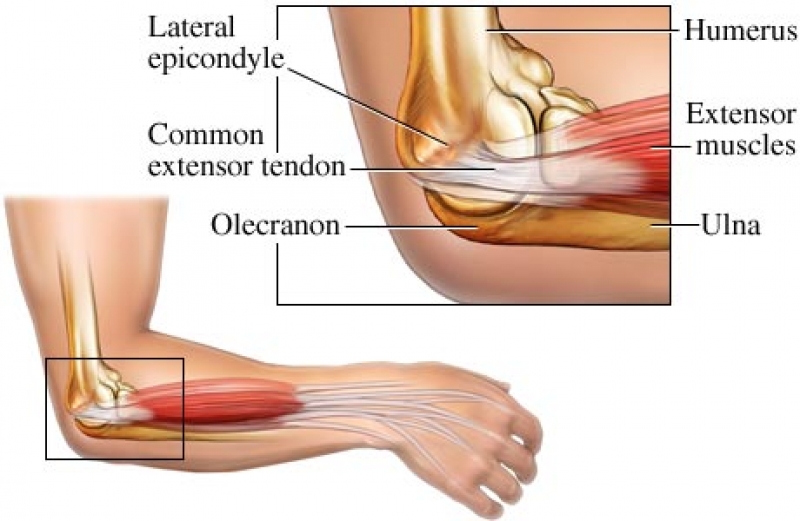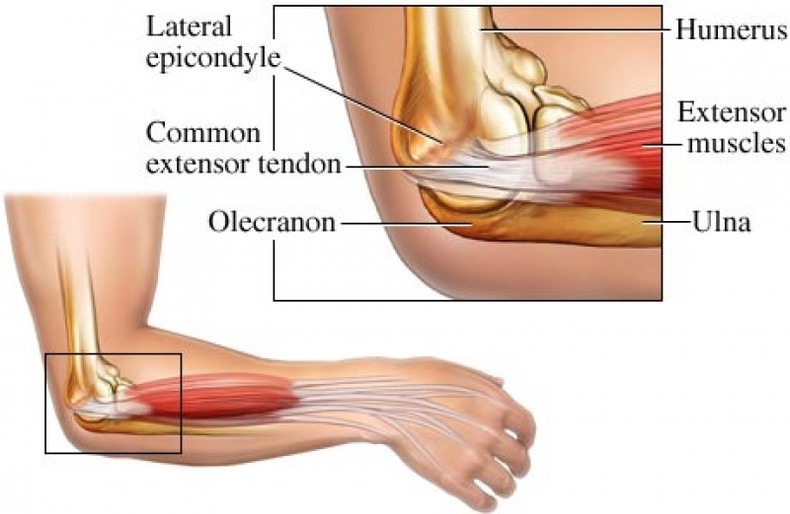Pickleball: A Surprising Culprit Behind Tennis Elbow
In recent years, pickleball has gained tremendous popularity as a fun and engaging sport for people of all ages. With its combination of tennis, badminton, and table tennis, pickleball offers a unique and exciting experience. However, this seemingly harmless game can sometimes lead to an unexpected injury: tennis elbow.
In this blog post, we'll explore how pickleball can cause tennis elbow and provide some tips for preventing and managing this common ailment.

Understanding Tennis Elbow:
Tennis elbow, also known as lateral epicondylitis, is a condition characterized by pain and inflammation in the tendons that connect the forearm muscles to the outer part of the elbow. Despite its name, tennis elbow is not exclusive to tennis players and can affect individuals who engage in repetitive arm motions. The condition is often caused by overuse or strain on the muscles and tendons in the forearm.
Pickleball and Tennis Elbow:
While pickleball may not involve the same intensity or impact as tennis, it does require repetitive arm movements, particularly in the forearm and wrist. During gameplay, players frequently use a paddle to hit the ball, exerting force on the forearm tendons. The combination of quick, repetitive motions and improper technique can strain these tendons, leading to the development of tennis elbow.
Prevention and Management:
- Warm-Up and Stretching: Prior to playing pickleball, it's crucial to warm up your muscles and perform stretching exercises. This helps to increase blood flow and flexibility, reducing the risk of injury.
- Proper Technique: Learning and maintaining proper technique is vital for preventing tennis elbow. Seek guidance from experienced players or a pickleball coach to ensure your strokes and swings are executed correctly, minimizing unnecessary strain on your forearm tendons.
- Equipment Considerations: The paddle you choose can make a significant difference in preventing tennis elbow. Look for a paddle that offers good shock absorption, mid-weight construction*, and a comfortable grip**. These features can help reduce the impact on your arm and decrease the risk of injury.
- Rest and Recovery: If you experience any pain or discomfort in your elbow or forearm, it's essential to rest and allow your body time to recover. Continuing to play through the pain can exacerbate the injury and delay the healing process.
- Strengthening Exercises: Incorporating specific strengthening exercises for your forearm muscles can help prevent tennis elbow. Consult with a healthcare professional or a physical therapist to learn exercises that target these muscles effectively.
- Ice and Compression: If you do develop tennis elbow symptoms, applying ice to the affected area and using compression can help reduce inflammation and provide relief. Use an ice pack wrapped in a towel for 15-20 minutes several times a day.
*Why Midweight Construction? A paddle that is too light can encourage over-swinging to generate enough force to get the ball across the net, or deep in the opponents' court. A paddle that is medium to heavier in weight (within reason!) ensures that the power is coming from the mass of the paddle when it connects with the ball, requiring less work from the player. For players with, or seeking to avoid tennis elbow, we often recommend 7.6 ounces on up.
**What do we mean by a "Comfortable Grip"? We recommend buying a paddle with (or customizing your existing paddle's grip) to a size that is neither tiny nor huge. For a quick reference, look to have about an index finger's space gap between your fingertips and palm when you are gripping your paddle. If your fingertips are wrapping around and touching, or nearly touching the fleshy part of your palm, make your handle size larger. If you have a gap larger than approximately a half inch, inquire about reducing your paddle's grip size. There are plenty of ways to increase or decrease your handle size as needed. (we'll dive into this further in the next post!)
Conclusion:
Pickleball is a fantastic sport that brings joy and excitement to countless individuals. However, it's crucial to be aware of the potential risk of developing tennis elbow from repetitive arm motions during gameplay. By following preventive measures, such as warming up, using proper technique, and considering equipment options, players can minimize the chances of experiencing this injury. If tennis elbow does occur, rest, recovery, and appropriate medical advice should be sought to ensure a prompt and complete healing process. Enjoy the game, stay safe, and keep swinging those paddles!

